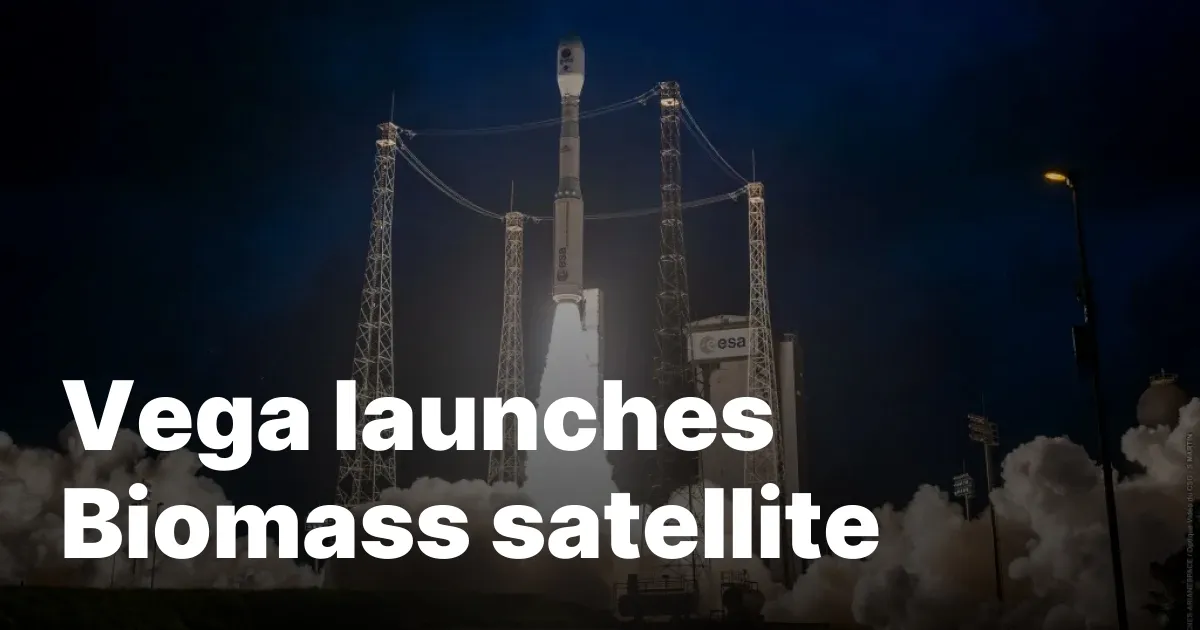
WASHINGTON — In a significant achievement for European space endeavors, the Vega C rocket successfully launched an Earth science satellite for the European Space Agency (ESA). This mission, which took place on April 29 at 5:15 a.m. Eastern time, was also heralded as a demonstration of European space sovereignty. The launch occurred from the European spaceport located in French Guiana.
The payload for this mission was ESA’s Biomass satellite, which separated from the rocket’s Avum upper stage nearly an hour after liftoff. The satellite was successfully placed into its intended sun-synchronous orbit, positioned at an altitude of 666 kilometers. Weighing 1,250 kilograms, the Biomass satellite was constructed by Airbus Defence and Space and is part of ESA’s Earth Explorer program, which focuses on Earth science missions.
The primary instrument aboard the Biomass satellite is a P-band synthetic aperture radar (SAR). This advanced technology will provide critical data to assess the carbon storage in Earth’s forests and how it changes over time. Simonetta Cheli, ESA’s director of Earth observation programs, explained at a prelaunch briefing, “It has the capability to do sort of a scan, like when you do a medical scan, of the forest.”
The Biomass mission is designed to last for 5.5 years, with the initial 18 months dedicated to a “tomographic phase,” enabling detailed mapping of the internal structures of forests. Following this phase, the satellite will conduct interferometric observations over the next four years to track changes in forest height and biomass. In addition to forests, the satellite will also observe glaciers and deserts, leveraging its radar’s ability to penetrate through ice and sand.
ESA plans to collaborate with NASA by exchanging data with the NISAR spacecraft, which is set to launch soon with its own SAR instrument operating at higher frequencies. Justin Byrne, head of science and Mars programs at Airbus, noted at the prelaunch briefing that P-band operates at lower frequencies compared to other SAR instruments, which necessitated the development of innovative technology within the radio-frequency chain, including new amplifiers and electronics.
This successful launch marked the first operational flight of the Vega C since its return to flight in December 2024, following a previous launch failure on a mission designated VV22. Toni Tolker-Nielsen, ESA’s director of space transportation, assured that comprehensive measures had been taken to guarantee a safe launch for the Biomass satellite. “We are scrutinizing, very closely, all of the launcher for any anomalies or weak points,” he stated.
Following the launch, officials emphasized the critical importance of having both the Vega C and the larger Ariane 6 operational. David Cavaillolès, chief executive of Arianespace, highlighted the current geopolitical climate, stating, “In the current context, full of uncertainty and with some geopolitical evolution, the fact that we are able to cover any mission with our two launchers is something that is of utmost importance.”
Reflecting on Europe’s recent launcher crisis, which had necessitated purchasing launches from SpaceX, Cavaillolès asserted, “Now we are back, and of course, our big challenge now is to ramp up and do more and more launches.” Arianespace has already conducted two launches this year, one for each of the Ariane 6 and Vega C. The company has plans for four more Ariane 6 launches and two additional Vega C launches in the upcoming months, with the next Vega C launch scheduled for July.
Arianespace is currently transitioning the launch services of Vega C to Avio, the prime contractor for the rocket. Arianespace will oversee the next three Vega C launches before Avio fully assumes responsibility. During the prelaunch briefing, officials from both Arianespace and Avio reported that this transition is proceeding smoothly, ensuring a robust future for European space missions.